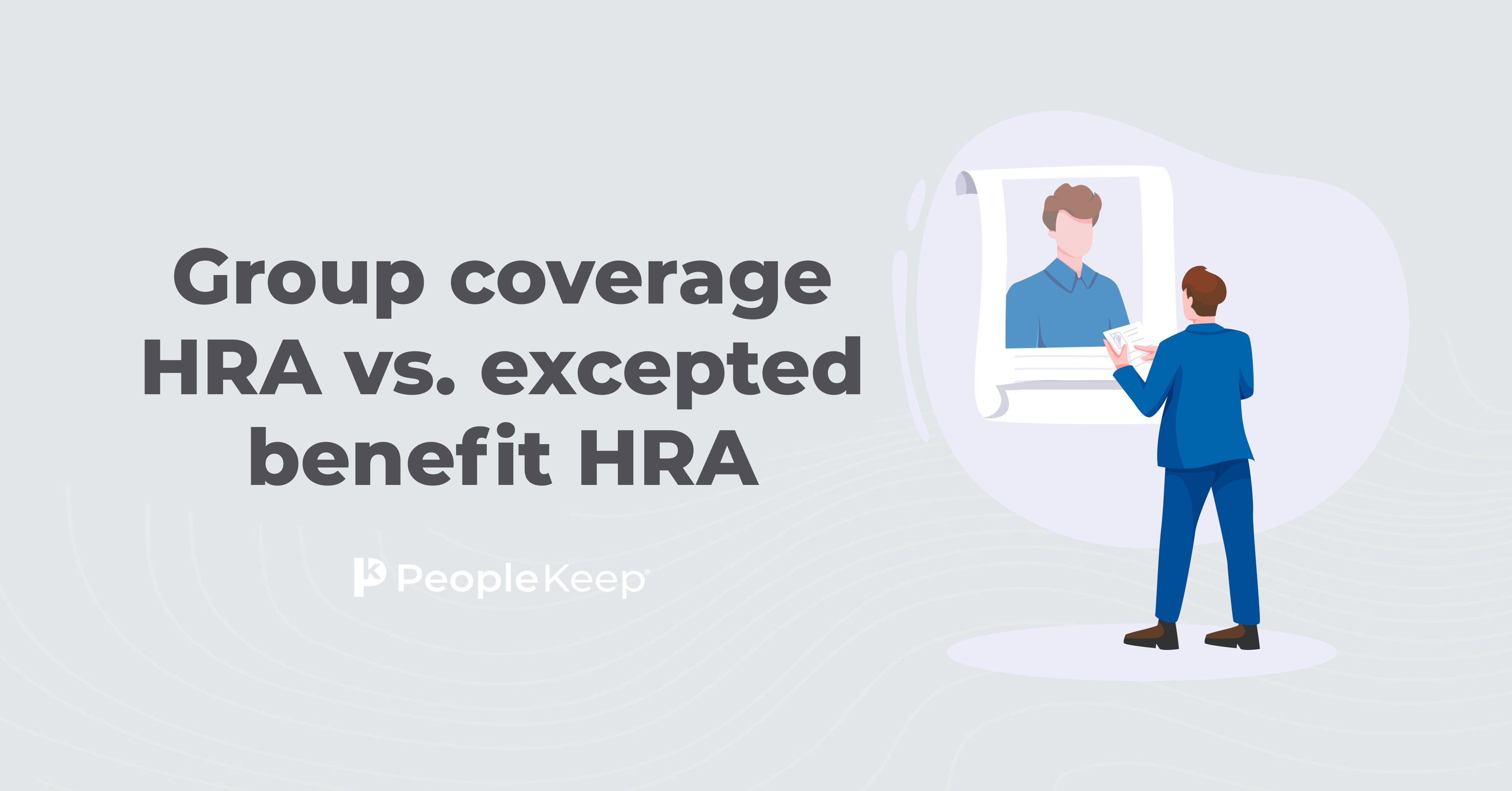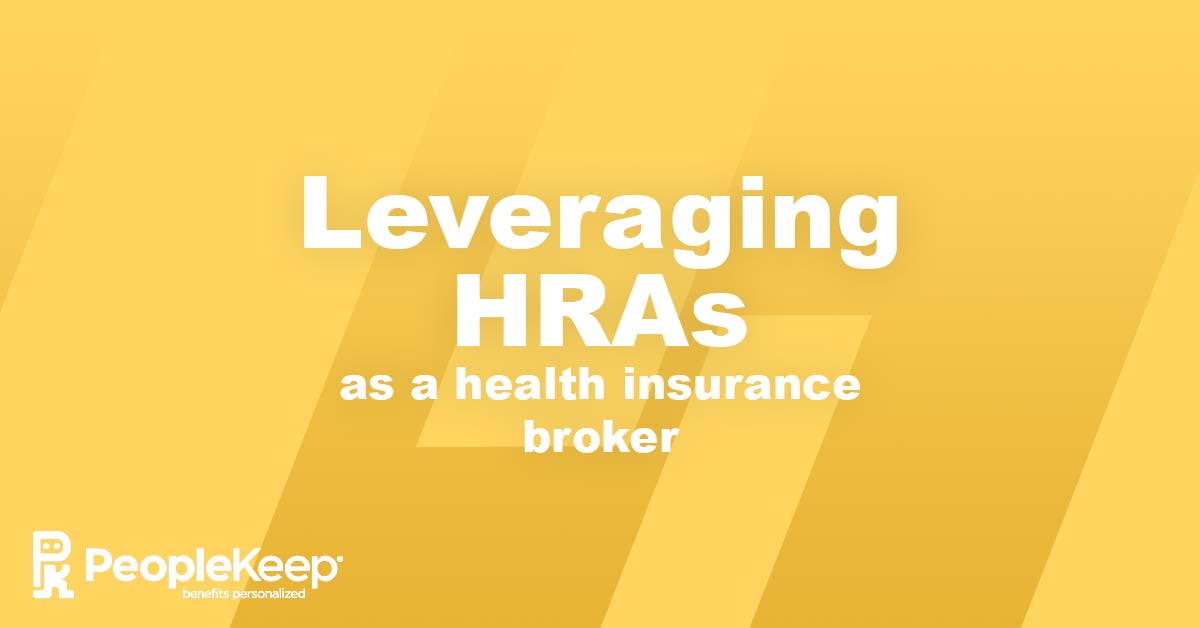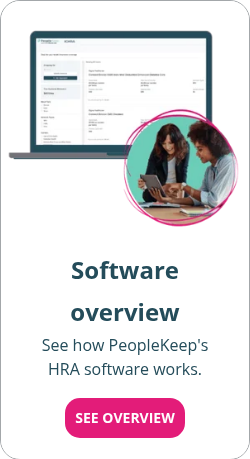Who can administer a health reimbursement arrangement (HRA)?
By Holly Bengfort on February 22, 2024 at 5:32 AM
In the world of employee benefits, health reimbursement arrangements (HRAs) have gained popularity as a flexible and cost-effective health coverage option. Sometimes mistakenly called health reimbursement accounts, these arrangements allow employers to reimburse their employees for qualified medical expenses, providing financial support for healthcare needs.
However, it's important to understand who can administer an HRA to ensure compliance with regulations and maximize the benefits for employers and employees.
In this article, we'll go over HRA rules and who can administer an HRA.
Takeaways from this blog post:
- HRAs are IRS-approved, employer-funded health benefits. There are different HRA types available, including the qualified small employer HRA (QSEHRA), individual coverage HRA (ICHRA), and group coverage HRA (GCHRA).
- HRAs must follow the rules and guidelines set by the IRS, such as providing reimbursement for only eligible medical care expenses and health insurance premiums.
- Organizations have three options for compliant HRA administration: an HRA software provider, a traditional third-party administrator (TPA), or self-administration.
HRA overview
Let's review the basic rules of HRAs. The federal government authorizes HRAs under Section 105 of the Internal Revenue Code and IRS Notice 2002-45. The Small Business Healthcare Relief Act (part of the 21st Century Cures Act) authorized the creation of the qualified small employer HRA (QSEHRA) in 2016, while the Departments of the Treasury, Labor, and Health and Human Services established the individual coverage HRA (ICHRA) in 2019.
They're a type of self-funded, tax-advantaged health plan. Employers can offer an HRA either in conjunction with a traditional group health insurance plan or as a stand-alone plan to reimburse employees for their individual health insurance coverage and other qualified out-of-pocket costs.
With a QSEHRA or an ICHRA, an organization reimburses employees for qualified medical expenses and individual health insurance premiums instead of offering a traditional group health insurance policy.
However, a group coverage HRA (GCHRA), also called an integrated HRA, works alongside a traditional group health plan. For an employer with a high deductible health plan, a GCHRA can enhance their health benefit by helping to cover out-of-pocket medical expenses that aren't fully paid for by the group health plan.
To receive the tax benefits of an HRA and to be compliant with various regulations (outlined further below), the Internal Revenue Service (IRS) has defined the rules and guidelines for an HRA in IRS Notice 2002-451.
Under these rules:
- Only the employer can contribute funds to the HRA. They do this on a pre-tax basis. An employer can't fund it through employee salary deduction (in other words, it's not a cafeteria plan). Any unused funds stay with the employer when an employee leaves the organization or the applicable plan year or runout period ends.
- An HRA may only reimburse employees for expenses they incurred during their effective dates in the HRA plan.
- An HRA can reimburse employees for eligible medical expenses and monthly premiums for health insurance coverage, as defined in IRC Section 213(d)(1)(D).
- Employees must provide proof for each eligible medical expense.
- Employers generally exclude reimbursements from the employee's gross income under Internal Revenue Code Sections 106 and 105. They're free from income taxes as long as the employee has minimum essential coverage (MEC). They're also free from payroll taxes for both the employer and employee.
What do employers need to administer an HRA?
For an employer to administer an HRA, they need to have legal HRA plan documents in place. These documents describe the terms and conditions related to the operation and administration of the HRA. Since an HRA is subject to ERISA, employers must provide the document in writing.
If an HRA exists without a written HRA plan document, the organization is out of compliance. In addition to the HRA plan document, an organization needs to make sure it has certain safeguards in place to stay compliant with the IRS, the Employee Retirement Income Security Act of 1974 (ERISA), the Health Insurance Portability and Accountability Act (HIPAA), and the Affordable Care Act (ACA).
Types of HRA administrators
Because of these compliance reasons and for ease of use and time savings, most organizations use a third party for HRA administration services. Organizations have three main options for compliant HRA administration: an HRA software provider, a traditional third-party administrator (TPA), or self-administration.
HRA administration software provider
An HRA administration software provider, like PeopleKeep, helps organizations with all the details of HRA administration.
HRA administration software takes care of the following:
- Setting up the HRA
- Creating and distributing HRA plan documents
- Providing tracking of HRA funds
- Reviewing claims for reimbursement
- Keeping medical receipts on file electronically
- Notifying the employer through the software when to reimburse employees via payroll
HRA administration software doesn't require pre-funding of HRA allowances and isn't a fiduciary. When using this software, the HRA administrator reviews and approves reimbursements they verified as qualified expenses. Once the software notifies employers about approved reimbursement requests, employers can reimburse their employees. Because software vendors like PeopleKeep take care of the most time-consuming tasks, administering your HRA takes only a few minutes each month. Organizations often have office managers, accounting staff, or even their insurance agent or CPA handle the rest.
Traditional TPA
A traditional TPA will help an organization do many of the same things an HRA administration software does.
TPAs take care of the following:
- Setting up the HRA
- Creating and distributing plan documents
- Managing all HRA funds
- Reviewing claims for reimbursement
- Keeping medical receipts on file
- Issuing reimbursements to employees.
However, hiring a TPA is often more costly than using a dedicated HRA administration software.
Self-administration
The final way employers can administer an HRA is by self-administration. Technically, an organization can self-administer its HRA, but failure to comply with the minimum HRA federal administration requirements is common without utilizing proper HRA software or a TPA.
Organizations that self-administer are frequently out of compliance with HRA, ERISA, HIPAA, COBRA, and ACA regulations, and they can face costly fines. If an organization puts into place all of the safeguards needed for compliance, the administrative cost likely outweighs the benefits of the HRA.
HRA administration and compliance
The following are the HRA compliance requirements discussed above:
Tax savings and IRS compliance
To facilitate tax-free reimbursements for both employers and employees, the IRS requires the establishment of a formal HRA plan document and summary plan description (SPD). These documents describe the duties the plan administrator will perform. Employers must also present employees with a summary of benefits & coverage document.
See the following articles for more specific reporting requirements:
- QSEHRA W-2 reporting requirements
- ICHRA reporting requirements
Federal compliance
The federal government has guidelines for employers who want to contribute to employee's IRS-qualified health expenses:
- HIPAA (medical privacy law): You must protect employee medical information that meets standards for protected health information (PHI) . You’ll also need to keep these records securely and in compliance with IRS regulations for seven years. The best way to ensure HIPAA compliance is for employers to never see employees' medical information or even the specific out-of-pocket expenses their employees submit for reimbursement. With HRA software like PeopleKeep, we review your employees’ medical information and reimbursements for you.
- ERISA: Under ERISA, employers can’t endorse a specific individual health insurance plan. When offering an HRA, the employer should not have a hand in helping employees select a health plan. This is another reason HRA administration software is an excellent choice. PeopleKeep’s partners can help your employees find a plan that best fits their needs.
- COBRA: Organizations that employ 20 or more employees must give eligible employees a chance to elect COBRA coverage when they're terminated from an HRA benefit. Some states have additional COBRA laws for smaller organizations.
- ACA: These regulations provide guidance as to what plans satisfy the employer mandate for providing coverage and what constitutes MEC. If your organization has 50 or more full-time equivalent employees (FTEs), you must offer an affordable health benefit that meets MEC and minimum value standards.
Conclusion
With the rising cost of healthcare, more employers are turning to health reimbursement arrangements (HRAs) as a flexible and cost-effective way to offer affordable employee health coverage. Employers and business owners have the authority and responsibility to administer HRAs for their employees. However, they can choose to partner with traditional TPAs or an HRA administration software provider for effective and efficient management.
This post was created on October 1, 2018. It was last updated on February 22, 2024.
Check out more resources
See these related articles

Group coverage HRA vs. excepted benefit HRA
Get a side-by-side comparison of group coverage HRAs and excepted benefit HRAs so you can know which one is best to supplement your group health plan.

HRAs and W-2 annual reporting
Learn about HRA W-2 annual reporting requirements. Understand what employers need to include on employees' W-2 forms for HRA compliance.

Leveraging HRAs as a health insurance broker
Brokers can unlock value by offering HRAs. Learn how positioning yourself as an HRA-forward broker helps clients cut costs and boost benefits flexibility.



